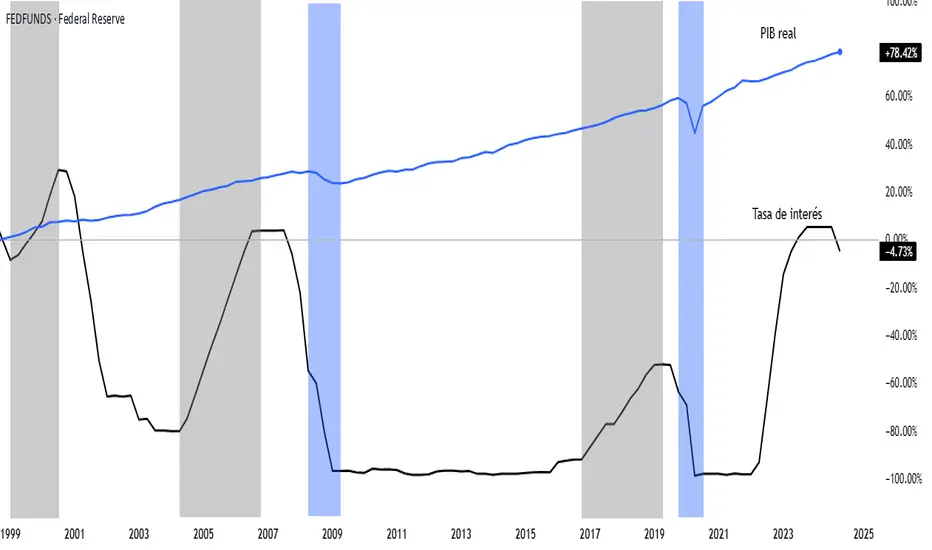Real GDP and the Federal Funds Rate are closely intertwined in the context of economic policy and performance. The Federal Funds Rate, set by the Federal Reserve, is a key tool used to influence economic activity. When the Fed raises the Federal Funds Rate, borrowing costs increase for consumers and businesses, which can slow down spending, investment, and overall economic growth, potentially leading to a moderation in Real GDP growth. Conversely, when the Fed lowers the Federal Funds Rate, it aims to stimulate the economy by making borrowing cheaper, encouraging spending and investment, which can boost Real GDP growth. However, this relationship is not always straightforward, as other factors like inflation, global economic conditions, and fiscal policy also play significant roles. For instance, during periods of economic recovery, low rates may support GDP growth, but if inflation rises too quickly, the Fed may raise rates to cool the economy, even if it risks slowing Real GDP expansion. Thus, the interplay between Real GDP and the Federal Funds Rate reflects the delicate balance the Fed seeks to maintain between fostering growth and controlling inflation.
免責聲明
這些資訊和出版物並不意味著也不構成TradingView提供或認可的金融、投資、交易或其他類型的意見或建議。請在使用條款閱讀更多資訊。
免責聲明
這些資訊和出版物並不意味著也不構成TradingView提供或認可的金融、投資、交易或其他類型的意見或建議。請在使用條款閱讀更多資訊。
